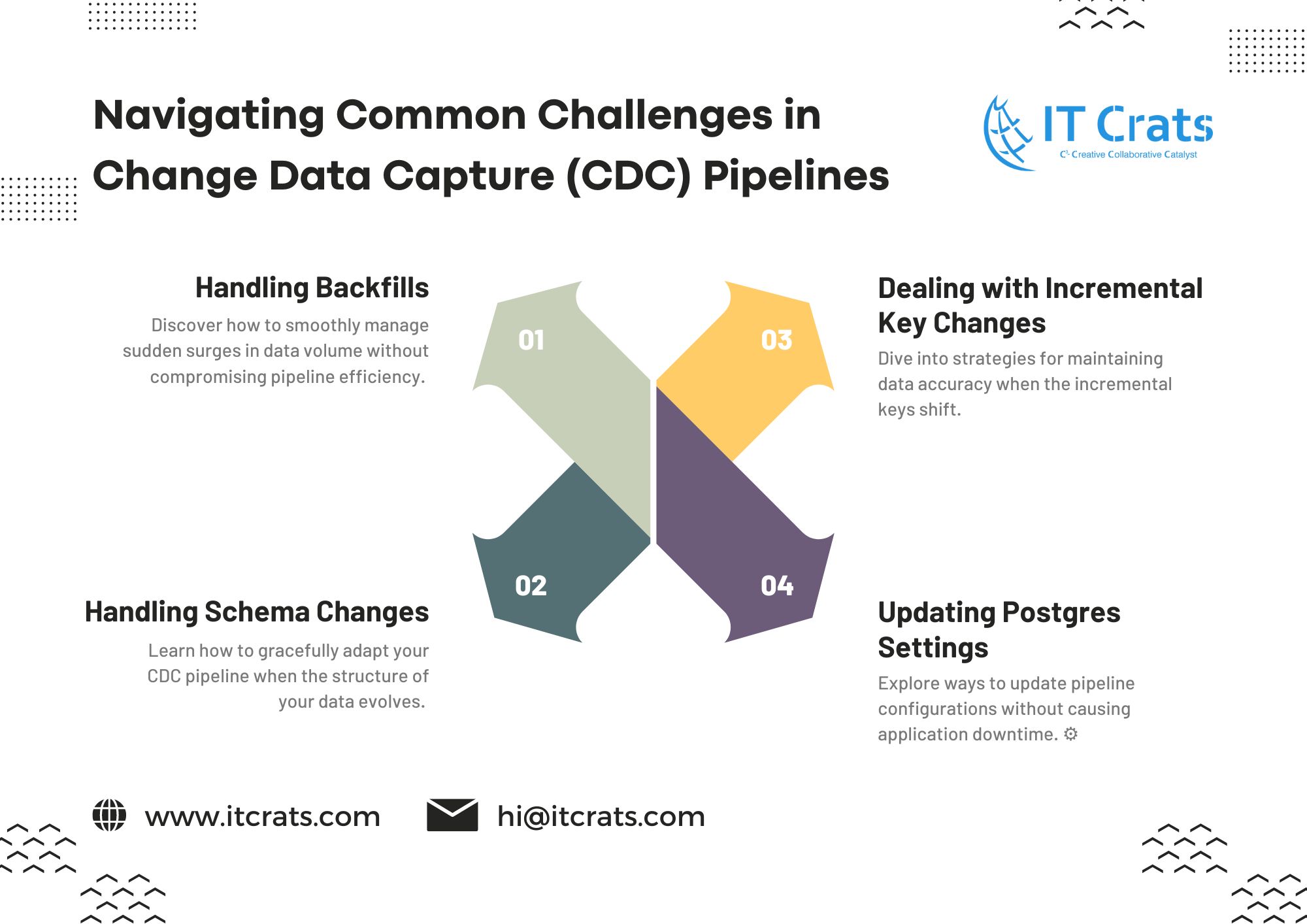
Change Data Capture (CDC) pipelines have revolutionized the way organizations process and utilize their data. With real-time insights becoming a necessity for data-driven decisions, CDC pipelines have taken center stage. However, it’s essential to be aware of potential challenges that might arise during this process. In this article, we will dive into some of these caveats and explore strategies to handle them effectively. 🚀
1. Handling Backfills/Bulk Changes
Imagine you’re dealing with a scenario where you need to backfill or make bulk changes to multiple rows in your dataset. While CDC pipelines efficiently handle real-time changes, accommodating sudden and significant modifications requires extra attention. In such cases, both the Kafka Connect cluster and the Kafka cluster need to be prepared to handle the increased load. 💡
Example:Suppose you manage an e-commerce platform and decide to update the pricing of all products due to a site-wide promotion. This bulk change triggers a surge in data flow through the CDC pipeline. Ensuring that your infrastructure can handle this spike is crucial to maintaining smooth operations. ⚙️
2. Handling Schema Changes
In the dynamic world of data, schema changes are inevitable. When you alter the structure of your data tables, your CDC pipeline must adapt accordingly. Properly managing schema changes is crucial to avoid disruptions in the pipeline’s functionality. 🛠️
Example:Imagine you have a customer database, and you decide to add a new column to store additional contact information. This schema change affects the way data is captured and transmitted through the pipeline. Utilizing a schema registry and a consumer system can simplify this process by ensuring that data consumers are aware of and can handle schema changes. 📊
3. Dealing with Incremental Key Changes
Sometimes, you might encounter changes in the incremental key, which is vital for identifying and tracking changes in your data. Handling these changes requires careful consideration to maintain data integrity and accuracy. 🧩
Example:Consider a scenario where you’re tracking sales data by product IDs. If these IDs undergo modifications, it could potentially disrupt the incremental CDC process. Addressing this issue might involve re-snapshotting the entire table or implementing a method to reconcile the new key values seamlessly. 🔑
4. Updating Postgres Settings
Setting up a CDC pipeline often involves adjusting configurations in your source database. Specifically, when using log-based CDC, like with the Debezium connector, certain database settings may need to be updated. However, this could necessitate restarting your database, causing potential application downtime. ⚙️
Example:Suppose you’re utilizing Postgres for CDC, and you need to configure the database for proper log-based CDC functionality. Updating these settings might require restarting the Postgres database server. To minimize disruptions, careful planning and coordination are essential. 🔄
Conclusion: CDC pipelines have redefined how businesses harness their data for real-time insights. However, navigating the challenges that come with these pipelines is equally important. Handling backfills, schema changes, incremental key adjustments, and database configuration updates require thoughtful strategies to maintain data accuracy, pipeline efficiency, and application availability. By being aware of these caveats and implementing proactive solutions, organizations can continue to leverage the power of CDC pipelines while ensuring seamless operations. 🌟
If you’re interested in real-time analytics for your business or have any questions about the process, feel free to reach out to us at hi@itcrats.com. Let’s work together to transform your data-driven vision into reality! 🤝🌟











